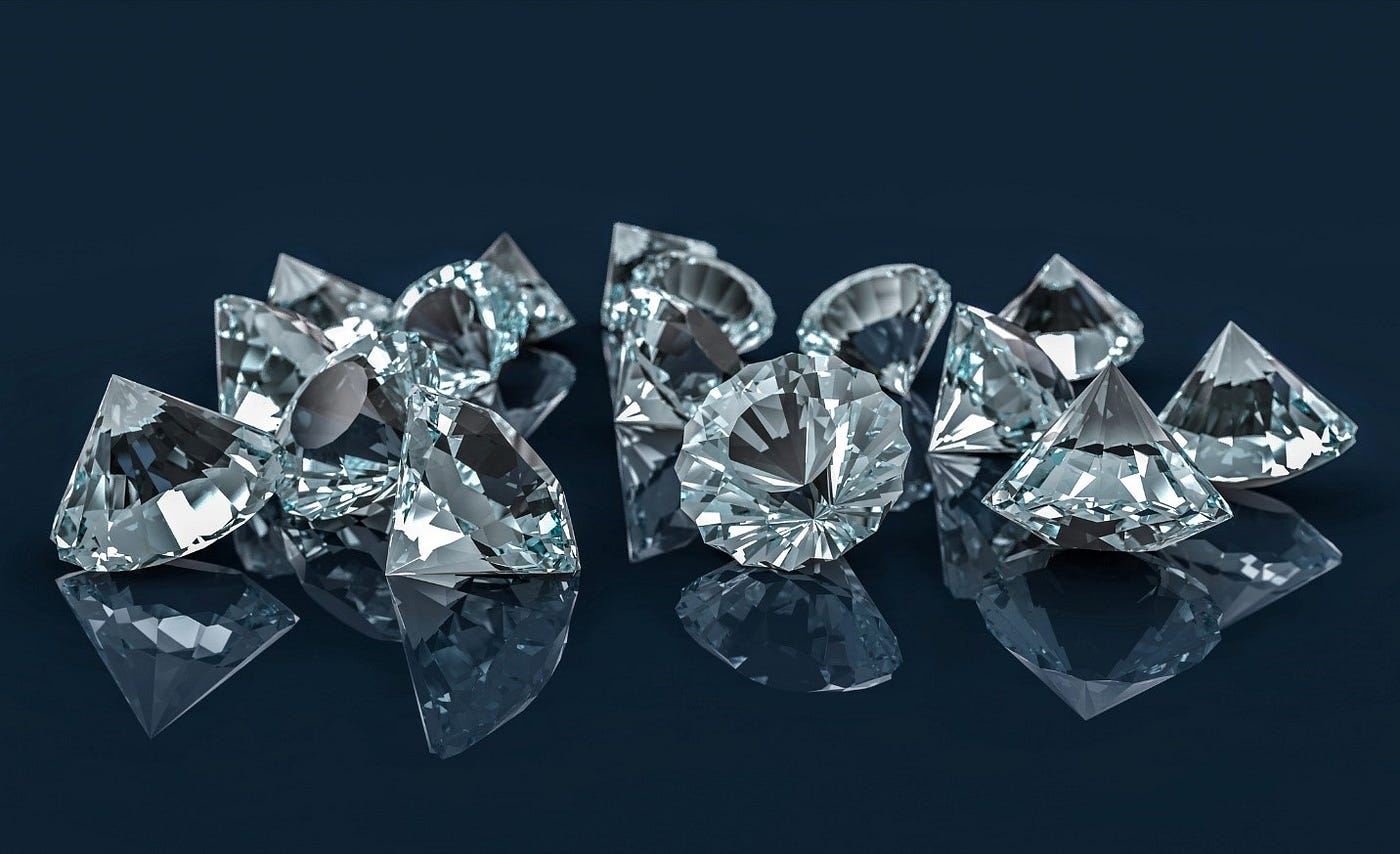
The world of lab-grown diamonds has seen remarkable advancements in recent years, offering consumers an ethical and sustainable alternative to traditional mined diamonds. One of the most popular and established methods for creating Lab grown diamonds hpht (High Pressure High Temperature) process. This article explores HPHT lab-grown diamonds, their creation process, benefits, and why they are an excellent option for those seeking both beauty and sustainability.
Table of Contents
What Are Lab-Grown Diamonds?
Lab-grown diamonds, also referred to as synthetic diamonds or man-made diamonds, are real diamonds created in a controlled laboratory environment. These diamonds have the same physical, chemical, and optical properties as naturally occurring diamonds, including their remarkable hardness, brilliance, and fire.
The primary difference between lab-created diamonds and mined diamonds is their origin. Lab-grown diamonds are made through advanced technological processes that replicate the natural conditions under which diamonds form in the Earth’s mantle, but without the need for mining.
The HPHT Process: How Lab-Grown Diamonds Are Made
One of the two main methods of producing lab-grown diamonds is the HPHT method. The HPHT process mimics the natural geological conditions that form diamonds deep beneath the Earth’s surface. Here’s how it works:
1. The Diamond Seed
The HPHT process begins with a small diamond seed, which is typically a tiny piece of natural diamond. This seed acts as the foundation for the lab-created diamond. The seed is placed inside a high-pressure, high-temperature chamber.
2. High Pressure and High Temperature
The next step involves applying intense pressure (about 5-6 GPa) and extreme heat (around 1,500°C to 2,000°C) to the chamber. These conditions replicate the environment deep within the Earth, where natural diamonds are formed over millions of years.
3. Carbon Source
A carbon source, typically graphite, is placed inside the chamber along with the diamond seed. Under the extreme pressure and heat, the carbon melts and begins to crystallize onto the diamond seed, forming the lab-grown diamond. Over time, the crystal grows layer by layer, just as a natural diamond would.
4. Final Diamond Formation
The result is a fully formed lab-grown diamond that is chemically identical to a natural diamond. These lab created diamonds have the same hardness (10 on the Mohs scale), brilliance, and light dispersion as those formed naturally under the Earth’s surface.
Why Choose HPHT Lab-Grown Diamonds?
There are several reasons why HPHT lab-grown diamonds have become a popular choice for consumers who are looking for both beauty and sustainability. Here are some of the key advantages of HPHT lab-created diamonds:
1. Sustainability
HPHT lab-grown diamonds are much more sustainable than mined diamonds. Traditional diamond mining has a significant environmental impact, causing deforestation, soil erosion, and water pollution, among other issues. Additionally, diamond mining often involves the use of harmful chemicals and energy-intensive processes that contribute to environmental degradation.
By contrast, HPHT lab-created diamonds are made in a controlled environment with minimal environmental impact. Since lab-grown diamonds don’t require mining, they don’t contribute to the destruction of ecosystems or the depletion of natural resources. For environmentally-conscious consumers, HPHT lab-grown diamonds offer a much more sustainable option for purchasing luxury diamonds.
2. Ethical Sourcing
Another significant advantage of HPHT lab-grown diamonds is their ethical production. Traditional diamond mining has long been associated with human rights abuses, including exploitative labor practices, child labor, and dangerous working conditions in certain regions of the world. These diamonds, often referred to as “blood diamonds,” can be a source of significant ethical concerns.
HPHT lab-grown diamonds, on the other hand, are created in a controlled and regulated environment, where workers are treated fairly, and ethical standards are maintained. This means that consumers can purchase a beautiful diamond without the ethical concerns associated with traditional diamond mining.
3. Affordability
One of the primary reasons consumers are drawn to HPHT lab-grown diamonds is their affordability. Lab-grown diamonds typically cost between 30% to 40% less than their mined counterparts. This price difference is largely due to the lack of expensive mining operations and transportation costs.
Consumers can enjoy a larger or higher-quality diamond for the same price as a smaller mined diamond. This makes HPHT lab-grown diamonds an attractive option for engagement rings, wedding bands, and other fine jewelry. The affordability factor allows consumers to get more for their money without sacrificing quality.
4. Quality and Durability
HPHT lab-grown diamonds are nearly identical to natural diamonds in terms of their appearance, chemical composition, and physical properties. The HPHT process results in diamonds that are incredibly durable and resistant to scratches and chips, just like naturally occurring diamonds. They also boast the same brilliance and fire, ensuring that the diamond sparkles beautifully in any setting.
Consumers can enjoy the beauty and longevity of a lab-created diamond without worrying about its quality or performance. The HPHT method allows for precise control over the diamond’s growth, ensuring a consistently high-quality product.
5. Variety of Shapes and Sizes
The HPHT process allows for the creation of diamonds in a variety of shapes and sizes. Whether you are looking for a classic round brilliant cut, a princess cut, or a more unique shape, HPHT lab-grown diamonds can be customized to suit your preferences. The variety of shapes and sizes available means that you can find the perfect diamond to fit your style and budget.
How to Choose the Best HPHT Lab-Grown Diamond
When shopping for an HPHT lab-grown diamond, there are several factors to consider to ensure you get the best value for your investment:
1. Certification
Make sure the lab-grown diamond you purchase is certified by a reputable gemological organization, such as the Gemological Institute of America (GIA) or the International Gemological Institute (IGI). Certification will confirm the diamond’s quality, including its cut, color, clarity, and carat weight.
2. Cut
The cut of a diamond plays a crucial role in its overall appearance. A well-cut diamond will sparkle and reflect light beautifully. When purchasing an HPHT lab-created diamond, look for one with an “excellent” or “ideal” cut grade to ensure maximum brilliance.
3. Clarity and Color
Consider the clarity and color of the HPHT lab-grown diamond. While lab-grown diamonds are generally free of inclusions and have fewer imperfections than natural diamonds, you should still check for any visible flaws. In terms of color, diamonds are graded on a scale from D (colorless) to Z (light yellow). For the most dazzling appearance, opt for a diamond that is rated D-F (colorless to near colorless).
4. Carat Weight
Carat weight determines the size of the diamond. While the HPHT process allows for precise control over the diamond’s growth, it is still important to choose a carat weight that fits your style and budget. Keep in mind that the size of the diamond will impact the price.
Conclusion: The Future of Lab-Created Diamonds with HPHT Technology
HPHT lab-grown diamonds represent the future of diamond production, offering a beautiful, sustainable, and ethical alternative to mined diamonds. With their remarkable durability, affordability, and identical qualities to natural diamonds, HPHT lab-created diamonds have become a top choice for consumers seeking luxury without the negative impacts of traditional diamond mining.
For anyone interested in purchasing a high-quality diamond that is both environmentally responsible and ethically sourced, HPHT lab-grown diamonds are an excellent choice. Whether you are looking for an engagement ring, a special gift, or a timeless piece of jewelry, lab-created diamonds created through the HPHT process offer an attractive, sustainable, and affordable option.
